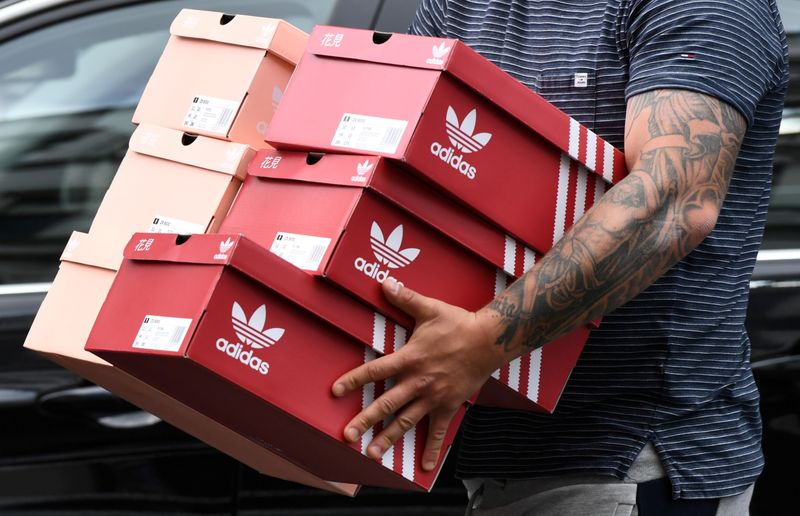Adidas AG (ETR:ADSGN) (ADDYY) reported third-quarter earnings Wednesday, with revenue in all regions other than North America edging slightly higher.
The sportswear giant revealed total revenues declined 6% to €5.999 billion in the third quarter from €6.408 billion in the same period last year.
However, the company said it sees the interest in its brand and products increasing in all markets, with a "visibly higher interest from retailers for the sell-in" for its Fall/Winter 2024 range.
The business also noted "extraordinary demand" for its Samba, Gazelle, Spezial and Campus franchises, which led to a return to growth in Adidas (OTC:ADDYY) Originals. As a result, it has scaled up supply but is far from covering the total current demand.
Adidas was significantly impacted by its split with rapper Kanye West last year, which left the company with unsold Yeezy shoes worth €1.2 billion ($1.3 billion). The company said Q3 revenues were also impacted by the sale of parts of its remaining Yeezy inventory, with the second product drop generating revenues of around €350 million, which is "somewhat below the Yeezy sales generated in the prior year's quarter."
While Adidas' overall inventory levels are down 23%, which is even a little more than it had planned, the company's CEO Bjørn Gulden said its current performance is "not good enough." Looking ahead, Adidas expects revenues to decline at a low-single-digit rate while underlying operating profit is anticipated to reach a level of around €100 million.
Reacting to the report, analysts at Morgan Stanley said that overall, given that Adidas had pre-released on October 17th relatively detailed results for 3Q and the company had updated its full-year 2023 guidance, there is "little incremental 'new news' in the release today."
"Unsurprisingly, total sales were exactly in line with market expectations, but sales in North America were a touch 'less bad' than expected, offset by the fact that 'Latin America' was not as good," the investment bank wrote.
"At 22%, the inventory-to-sales ratio is now only slightly higher than historical average in 3Q (around 18-20%) but in the release, the company flags that inventory in the trade remains too high, particularly in North America (which will weigh on future sales)," they added.
